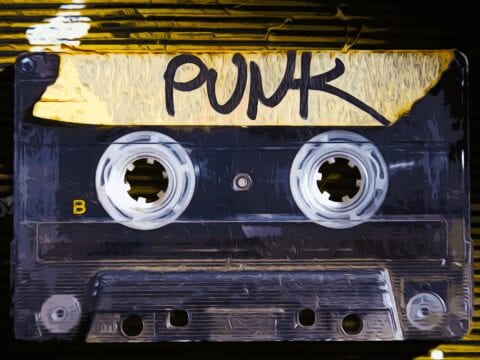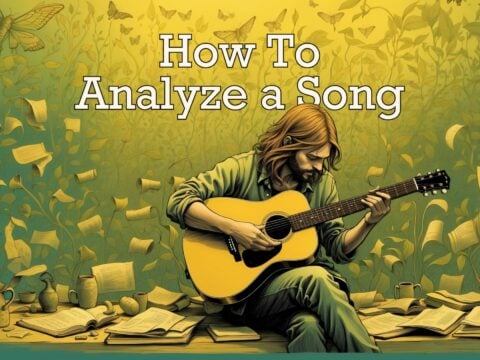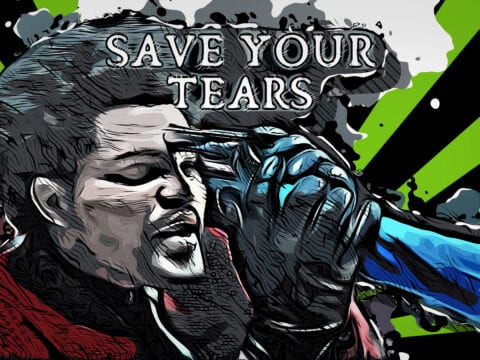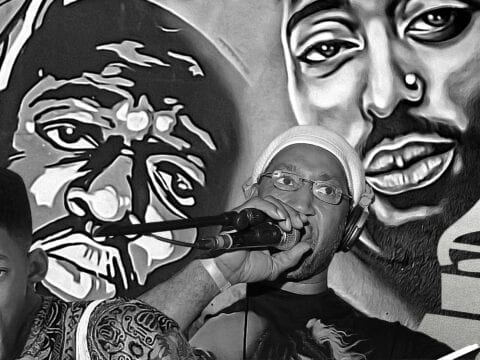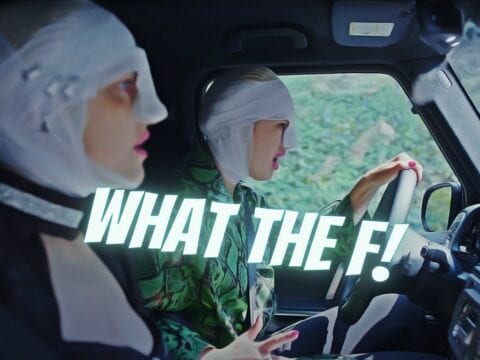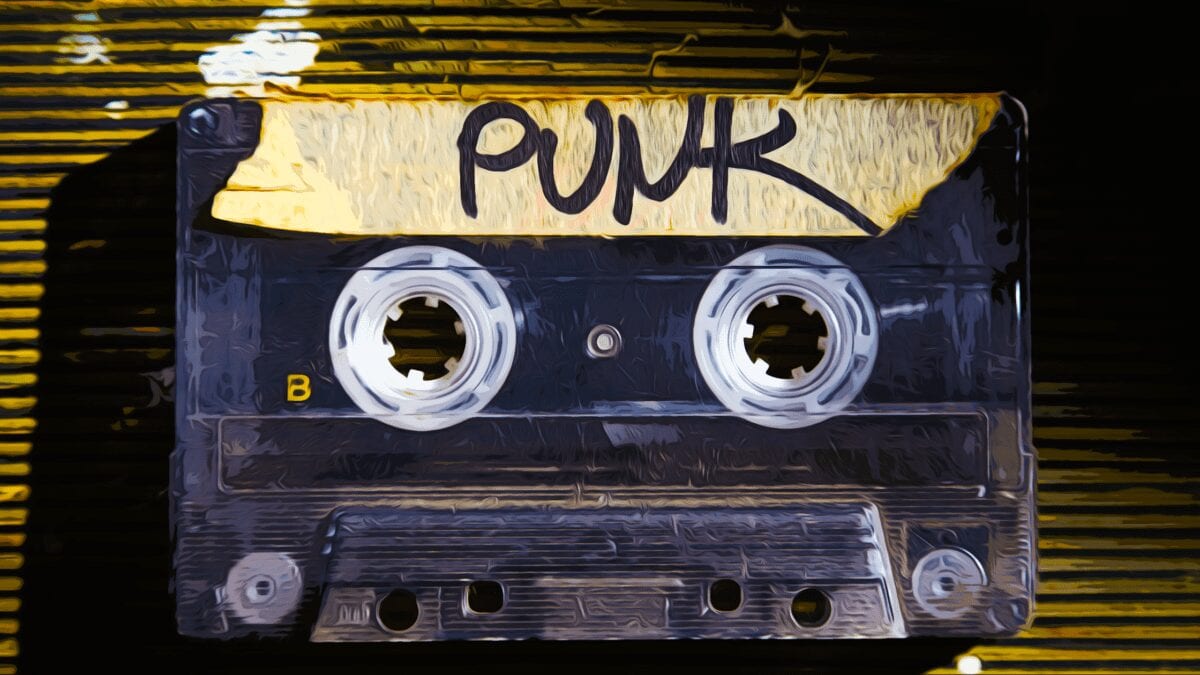
Punk rock music originated from the harsher, more aggressive 1960s rock and roll music that was popular in the United States and the United Kingdom, including early songs by popular British Invasion groups like The Kinks and The Who and regionally popular American bands dubbed “garage rock.” Punk is a raw and, in some cases, almost amateur-sounding style of rock music played at a fast tempo with aggressive vocals. Lyrical content for punk music ranges from humorous, nonsensical topics to overt statements on political and social issues.
Since the first punk bands debuted in the mid-1970s, punk rock has influenced musicians in a variety of genres because of its stripped-down, energetic tone, including alternative rock, pop-punk, and ska. Some bands that formed as punk rock bands, like the Beastie Boys, would instead record other genres of music during their careers.
In the absence of support from major record labels, many punk musicians embraced a “do it yourself” ethos by self-recording and self-releasing their own music (often forming their own record labels) and creating their own merchandise.
Though many punk bands achieved underground popularity, few of them were financially successful and it was not uncommon for punk bands to be short-lived or have a rotating roster of members, many of whom may not have had much experience playing their instruments.
Another notable aspect of punk rock music is that it was more amiable to female musicians than other subgenres of rock music. Patti Smith, Debbie Harry (Blondie), and Exene Cervenka (X) were frontwomen for popular punk bands, while punk bands like Black Flag (Kira Roessler) occasionally featured female musicians in their lineups.
We will now begin to explore the history of punk rock music from its origins to the early 1980s.
How Did Punk Rock Music Begin?
In the late 1960s, rock and roll music – once considered the music of teenage rebellion – was dominated by the “hippie” counterculture and intricate studio tinkering of bands like The Beatles and Pink Floyd. At that time, a handful of emerging bands performed music that had much more in common with the aggressive sound of early rock and roll records, “garage rock” bands like The Kingsmen, The Standells, The Troggs, The Seeds, and Question Mark & the Mysterians, and the first releases of British Invasion bands like The Rolling Stones, The Who, and The Kinks, particularly songs like “My Generation” and “You Really Got Me.”
This subgenre of rock music was much rawer than what was being played on contemporary radio and critics would later recognize it as an early influence on punk rock bands that would form in the mid and later 1970s. These early pioneers of punk include:
The Velvet Underground
The Velvet Underground originally formed in 1964 in New York City by original members vocalist/guitarist Lou Reed, musician John Cale, guitarist Sterling Morrison, with drummer Moe Tucker joining the band the following year. Although the band’s avant-garde music and close association with artist Andy Warhol led to the band being dubbed “art rock,” the Velvet Underground performed several stripped-down songs in a fast-paced tempo that contain recognizable elements of punk rock, including “I’m Waiting for the Man” and “White Light/White Heat.”
Other aspects of the Velvet Underground that was an influence on punk was the band’s status as an “underground” band whose popularity spread by word-of-mouth and Reed’s lyrical content, which referenced drug use and urban decay.
MC5
MC5 (short for Motor City 5) was formed outside of Detroit in 1964 and by 1965 had solidified its “classic” lineup with vocalist Rob Tyner, guitarist Wayne Kramer and Fred “Sonic” Smith, bassist Michael Davis, and drummer Dennis Thompson. The band released its first album in February 1969, Kick Out the Jams, a live album – a decision by the band’s record label, Elektra, to introduce MC5 to audiences by their wild, energetic live performances.
While the locally-popular group never achieved national success during their initial run, the music of MC5 was a stark contrast with the “groovy” music of the same era. MC5 was also one of the first rock groups to be distinctly political, including strong support of the Black Panthers and performing an eight-hour performance in protest of the Vietnam War outside the 1968 Democratic National Convention.
The Stooges
Formed in 1967 in Ann Arbor, Michigan by Iggy Pop (vocals), Ron Asheton (guitar), Scott Asheton (drums), and Dave Alexander (bass), The Stooges were originally an avant-garde rock band but soon went in the opposite direction with a raw, aggressive sound enhanced by Pop’s wild on-stage antics. The Stooges’ self-titled debut album (released in August 1969) was not a commercial success, but it contained songs that would later become seminal punk anthems like “1969” and “I Wanna Be Your Dog.”
The original lineup would break up after their follow-up album, 1970’s Fun House, was even less commercially successful. The band reconfigured for a third album, Raw Power, in 1973, with Ron Asheton switching to bass and James Williamson joining as a guitarist. Raw Power (which was credited to “Iggy and the Stooges”) was co-produced by Pop and glam rock superstar David Bowie and featured what would later become the Stooges’ signature song, “Search and Destroy.”
The New York Dolls
The New York Dolls formed in New York in 1971 and its most notable lineup featured David Johansen (vocals), Johnny Thunders (vocals/guitar), Sylvain Sylvain (piano/guitar/vocals), Arthur Kane (bass), and Jerry Nolan (drums) after the accidental death of the band’s original drummer Billy Murcia in 1972.
While mainly thought of as a glam rock band because of their extensive use of makeup and women’s clothing on stage, the group achieved underground popularity in the New York club scene and recorded two albums for Mercury Records, New York Dolls (1973) and Too Much Too Soon (1974). Neither album was commercially successful, and Mercury released the group from their contract. The band disbanded in 1976, but was later cited as a significant influence by many bands.
Thunders and Nolan would go on to form the punk rock band the Heartbreakers (not to be confused with Tom Petty’s band of the same name) with fellow punk pioneer Richard Hell of Television.
Years later, these bands and others would be referred to as “proto-punk” to indicate their influence on punk rock music. In particular, Iggy Pop would be dubbed by rock critics as “The Godfather of Punk” to highlight his influence on the genre.
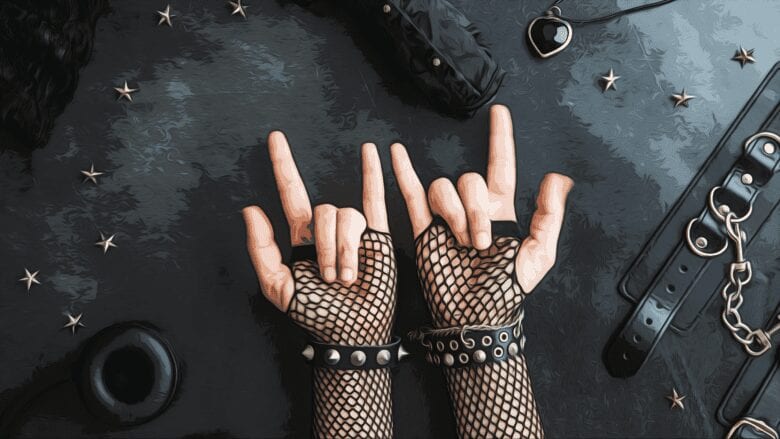
Who Invented Punk Rock Music?
Though the roots of punk rock began in the late 1960s, the consensus among punk fans and music historians is that the first band that can definitely be called a “punk rock band” was the Ramones.
The Ramones formed in 1974 in Queens, New York, and the four original members adopted “Ramone” as their stage surnames – vocalist Jeffrey Hyman became Joey Ramone, guitarist John Cummings became Johnny Ramone, bassist Douglas Colvin became Dee Dee Ramone, and drummer Thomas Erdelyi became Tommy Ramone.
The Ramones adopted a signature band look of long hair, black leather jackets, jeans, and sneakers and would perform fast-tempo songs often less than two minutes in length with lyrics that combined the good-time excitement of classic rock and roll (“I Wanna Be Your Boyfriend“), feelings of being an outsider (“Judy is a Punk“), and urban unrest (“53rd & 3rd“) and apathy (“Now I Wanna Sniff Some Glue“). The Ramones self-titled debut album was released in April 1976.
The Ramones would become popular in New York City clubs, including the famed CBGB and Max’s Kansas City, and were championed by Punk magazine, a fanzine focused on the emerging punk rock movement. The Ramones would also grow a significant fanbase in England, which led to the growth of the punk movement in the United Kingdom.
Though the Ramones would receive critical praise and had a devoted fanbase, the group would fail to achieve much mainstream success beyond appearing in the 1979 film Rock’ n’ Roll High School and performing the film’s title track. After recording 14 studio albums, the Ramones disbanded in 1996.
Though other punk rock bands also emerged in the mid-1970s, the Ramones were the first to achieve widespread recognition and inspire the formation of countless other punk rock bands. The band’s music, image, and iconography (including their logo, a variation on the U.S. Presidential Seal) have remained popular over the decades.
What Were Some Other Early Punk Rock Groups?
Television
Television was one of the most significant early punk bands and began performing in New York City venues like CBGB before the Ramones. The band was originally formed by singer/guitarist Tom Verlaine and singer/bassist Richard Hell, though Hell would leave the band before their recorded their first studio album because of musical differences. Hell would later form the Heartbreakers with Johnny Thunders and Jerry Nolan of the New York Dolls and later form a solo band, Richard Hell and the Voidoids. By the time Television recorded their first studio album, 1977’s Marquee Moon, the band’s sound had become more commercial.
The Patti Smith Group
Chicago native Patti Smith moved to New York and worked as a writer, frequently penning rock criticism. In 1974, she began recording and performing music and released the acclaimed album Horses in 1975 featuring Smith’s poetic lyrics. Smith’s music was noted for her artistic performances, and she achieved a Top 20 hit in the United States with the 1978 single “Because the Night,” which was written by Bruce Springsteen (though few would consider it a punk song). Considered a significant influence on alternative rock, Smith would record music reflecting alternative influences beginning in the mid-1990s.
Blondie
Though Blondie is best known for its new wave sound with hit singles like “Heart of Glass,” “Call Me,” “Rapture,” and “The Tide Is High,” the band – including vocalist Debbie Harry, guitarist Chris Stein, and keyboardist Jimmy Destri — began as a New York City punk group that released two moderately successful albums, Blondie (1976) and Plastic Letters (1978). Blondie’s following album, 1978’s Parallel Lines, took the band’s sound in a mainstream pop direction like Television had previously done.
The Misfits
Vocalist Glenn Danzig formed the Misfits in Lodi, New Jersey in 1977, and was soon joined by bassist Jerry Only. The band employed various other musicians over its initial run, including guitarists Bobby Steele and Doyle Wolfgang von Frankenstein (Only’s younger brother) and drummers Mr. Jim and Black Flag member Robo.
The Misfits pioneered the subgenre of horror punk by performing music inspired by classic horror and science fiction stories. The Misfits became an underground sensation, particularly when developing a fan club (dubbed the “Fiend Club”) that sold merchandise featuring the band’s popular skull logo. Though the band split up in 1983 (Danzig would later form a band under his own name that was more in the heavy metal genre), Only and Doyle would revive the Misfits in 1995 to much greater commercial success.
That band would carry on through various lineups until 2016, when Danzig, Only, and Doyle would reunite as “The Original Misfits” with guitarist Acey Slade and heavy metal band Slayer drummer Dave Lombardo and have since performed a successful series of sold-out performances.
Black Flag
While most of the first punk bands formed on the East Coast of the United States, Black Flag was formed in 1976 in Hermosa Beach, California in Los Angeles County. Initially led by vocalist Keith Morris (who would later form the punk band Circle Jerks) and guitarist Greg Ginn, Black Flag had several lineup changes throughout the late 1970s and early 1980s, including vocalist Henry Rollins fronting the band from 1981 to 1986 albums and Dez Cadena, who had briefly performed as the band’s vocalist before Rollins but switched to guitar once Rollins jointed.
Black Flag was one of the first punk bands to be labeled as hardcore punk, a subgenre that emphasized the aggressive, raw sound of punk rock with screaming vocals and live performances that would often turn violent (even between the audience and the band). After Black Flag broke up in 1986, the various members split into several different bands (including Descendents and Rollins Band).
Fear
One of the earliest California punk bands, Fear was formed in Los Angeles in 1977 by singer/guitarist Lee Ving. Fear was prominently featured in a 1981 documentary about the Los Angeles punk rock scene, The Decline of Western Civilization, and was later invited by Saturday Night Live cast member John Belushi to perform on the Halloween 1981 episode of the late-night show.
It was an infamous wild performance featuring slam dancers (including Belushi and members of other prominent punk bands) rushing the stage in a scene unlike anything ever seen on the sketch comedy show and was many Americans’ first exposure to hardcore punk music. Though the band was banned from Saturday Night Live for damaging the set, the notoriety from the performance increased Fear’s popularity in punk circles.
Other notable American punk rock bands formed in the late 1970s and early 1980s include the Dead Boys, Dead Kennedys, the Germs, X, The Dickies, The Cramps, Social Distortion, Bad Religion, Hüsker Dü, and Minor Threat. Other bands like the Go-Go’s formed as punk bands but like Blondie and Television would eventually record more mainstream music
How Did the Sex Pistols Change the Sound and Image of Punk Rock Music?
While punk was a popular genre of rock music in the United States, it became a significant cultural movement in the United Kingdom and was much more political. Businessman Malcolm McLaren, who briefly managed the New York Dolls, became the manager of a punk band named the Strand featuring vocalist Steve Jones and drummer Paul Cook. Vocalist John Lydon (under the stage name Johnny Rotten) and bassist Glen Matlock joined the group (with Jones switching to guitar) and the foursome adopted the name the Sex Pistols. McLaren helped guide the group in becoming a cultural force in the UK.
The group began performing live in late 1975, and by February 1976 the Sex Pistols started receiving media attention for their wild performances, Rotten’s dismissive stage persona, and influential fashion. After attracting controversy throughout the year, the Sex Pistols signed a record deal with EMI and released their first single, the politically-charged “Anarchy in the U.K.” on November 26, 1976.
Less than a week after the release, the Sex Pistols made a controversial appearance on the television program Thames Today which featured Jones saying several obscenities on television. The ensuing outrage led to promoters canceling several of the band’s gigs in the tour to support their single but brought the band a tremendous amount of publicity. The band’s anti-establishment attitude also attracted the interest of disillusioned youth during a difficult economic period in England. Later that year, EMI released the band from their contract, and shortly afterward Matlock left the Sex Pistols (he was ostensibly kicked out because he “liked the Beatles”).
The Sex Pistols hired John Simon Ritchie, dubbed Sid Vicious, as his replacement despite his limited musical experience. Vicious’ visual look was influential and helped bolster the band’s popularity. After briefly being signed to A&M Records, the Sex Pistols signed with Virgin Records and released their second single, “God Save the Queen,” a song that was considered offensive by many in the UK. The song reached #2 on the UK charts, though rumors persist that it actually achieved #1 but was held back to avoid insulting Queen Elizabeth II. Amid all the controversy the Sex Pistols recorded their debut (and only) album, Never Mind the Bollocks, Here’s the Sex Pistols, which was released in October 1977. It was immediately banned by many retailers but still reached #1 on the UK Albums Chart.
After a tour of the United States in which the band was frequently attacked and Vicious was unreliable because of drug issues, the Sex Pistols disbanded. Vicious died of a heroin overdose in February 1979 several months after he was charged with murdering his girlfriend, Nancy Spungen, though the circumstances of both of their deaths remain mysterious.
Though short-lived, the Sex Pistols were one of the most influential rock bands in any genre (the original band would reunite for several tours from 1996 through 2008). Some of the significant punk bands that emerged in the United Kingdom following the Sex Pistols include:
The Damned
The Damned was formed in 1976 with members from defunct early punk bands and debuted as an opening act for the Sex Pistols in July 1976. The group was quickly signed by Stiff Records and released their first single, “New Rose,” in October, making it the first punk single released in the United Kingdom, and their debut album, Damned Damned Damned, was the first album released by a UK punk group. Though the album charted in the Top 40, the Damned split up after their follow-up album, Music for Pleasure, failed to chart. The Damned has since reformed under several different configurations with the original band performing together on several occasions.
Buzzc***s
Buzzc***s were formed by vocalist Howard Devoto and vocalist/guitarist Pete Shelley in 1976 and were influenced by the Sex Pistols to pursue a punk sound in their music. After bassist Steve Diggle and drummer, John Maher joined the band the group formed a record label and released an EP titled Spiral Scratch. Devoto left the group and the band reconfigured with Shelley as the frontman and Diggle on rhythm guitar, and Buzzc***s released three albums that were successful in the UK before breaking up in 1981. Buzzc***s would reunite in 1989 for new recordings and tours with various lineups, though Shelley passed away in 2018.
The Clash
By far the most commercially successful band to emerge from the UK punk rock scene, The Clash – most notably the classic line-up of Joe Strummer (vocals/guitar), Mick Jones (vocals/guitar), Paul Simonon (bass/vocals), and Nicky Headon (drums) – debuted in July 1976 as an opening act for the Sex Pistols. After receiving significant press coverage for their live performances, the Clash signed with CBS Records in January 1977 and released their self-titled debut album in April 1977.
The Clash would place 8 singles on the UK chart from 1977 through 1979, with their biggest hit, “London Calling,” from the band’s successful third album London Calling. The Clash would embrace new wave elements with later successful singles “Train in Vain,” “Rock the Casbah” and “Should I Stay or Should I Go,” before the band disbanded in 1986 after the poor critical and commercial reception to their sixth album, Cut the Crap.
A Further Look in The History
We hope you found this history of Punk Rock music insightful. If you did and would like to dive into other similar genres, please check out our other articles in this series:
